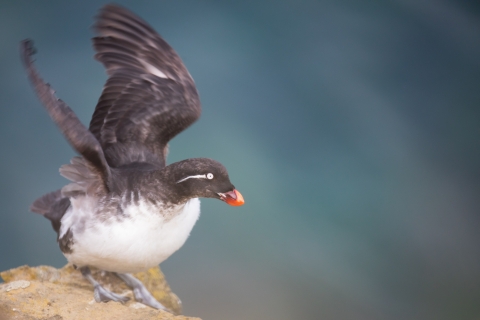What We Do
Wildlife conservation is at the heart of the National Wildlife Refuge System. It drives everything on U.S. Fish and Wildlife Service lands and waters managed within the Refuge System, from the purposes for which a national wildlife refuge national wildlife refuge
A national wildlife refuge is typically a contiguous area of land and water managed by the U.S. Fish and Wildlife Service for the conservation and, where appropriate, restoration of fish, wildlife and plant resources and their habitats for the benefit of present and future generations of Americans.
Learn more about national wildlife refuge is established to the recreational activities offered to the resource management tools used. Using conservation best practices, the Refuge System manages Service lands and waters to help ensure the survival of native wildlife species.
At Alaska Maritime National Wildlife Refuge, we conserve, protect, and restore the diverse lands, waters, wildlife, and cultural resources of the Refuge through excellence in education, outreach, and a program of scientific research on marine resources. Our vision for the refuge is a viable, abundant, and resilient community of marine life which scientists, tribes, and the public are actively engaged to conserve.
Management and Conservation
Refuges deploy a host of scientifically sound management tools to address biological challenges. Two challenges that the staff at Alaska Maritime National Wildlife Refuge have worked to actively manage are rats and invasive species, and contaminants, especially from World War II and formerly used defense sites. We have also developed a biosecurity plan to avoid introducing invasive plants and animals to the refuge.
Our Projects and Research
In addition to our ongoing programs of seabird inventory and monitoring and engaging with our neighboring communities, our staff works on a variety of projects with partners.




